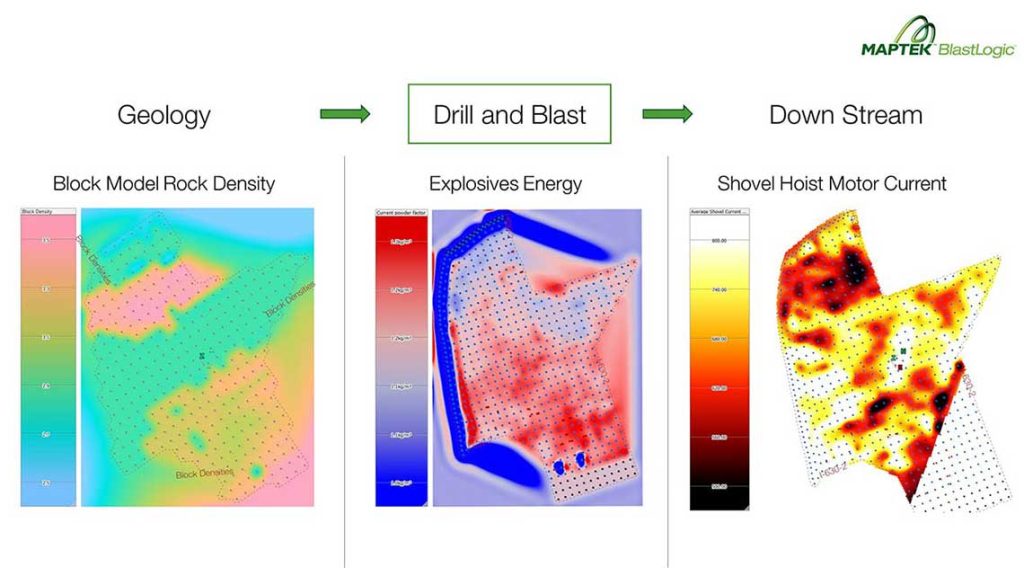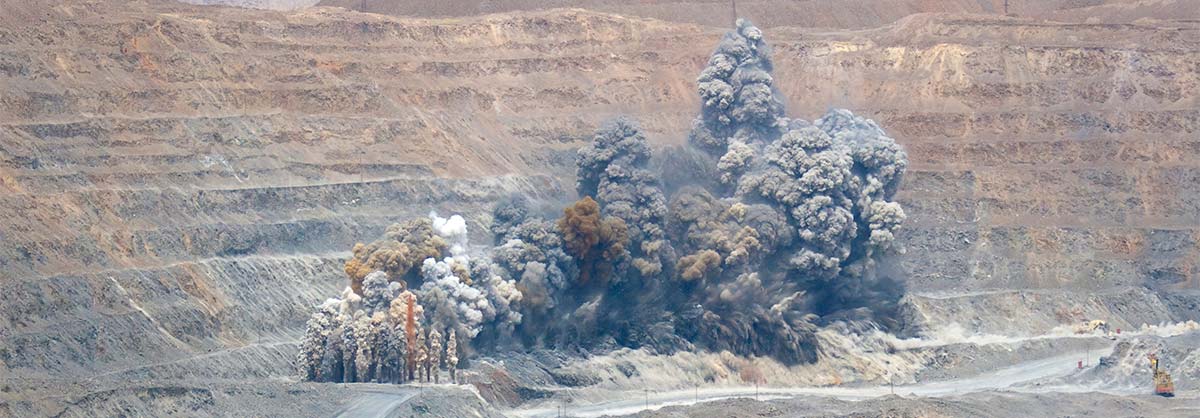June 2018 Issue Index
Reconciling post blast performance
Maptek BlastLogic addresses the difficult and time consuming process of reconciling field results back to design, allowing engineers to focus on blast improvement.
Reconciling field results back to design is difficult and time consuming. Maptek BlastLogic addresses this issue, and adds the ability to use those results to improve design and process.
Mines dealing with a burdensome reconciliation process risk entrenching poor blast practices.
BlastLogic provides a mechanism for mines to sustainably optimise blast safety, productivity and costs. Operational transparency is achieved through connecting data, and operational insights are delivered in near-real time.

For example, BlastLogic integrates with leading drill navigation systems, ‘bringing to life’ their measurement-while-drilling data to help validate ore grade and rock type boundaries. In connecting geology with this data, engineers optimise charge plans and initiation designs in BlastLogic for better fragmentation efficiency and finer vibration control.
How does drilling hardness and powder factor affect dig rates? Is water compromising hole integrity? What size distribution will optimise mill throughput?
By collecting and visualising real-time blasting information, BlastLogic allows mines to not only address these questions, but also adapt to production changes.
Achieving 5% annual savings in drill and blast costs is possible for most mines.
The capability to collate and present field data is not enough. BlastLogic frees up engineering time by simplifying the process of design and reconciliation, so engineers can drive improvements in blast performance. Blast analytics that correlate and aggregate data allow trends to be tracked over time, with nuances highlighted.
Benefits of integration
BlastLogic is the industry’s only truly integrated blast design and reconciliation solution. The different components (server, SQL database, desktop, tablet, integration service, custom reporting and licensing) have all been designed and built from the ground up as an integrated system, as opposed to combining separate software applications that are inherently difficult to integrate.
Implemented at scale by the world’s leading miners, BlastLogic is relied on to support the most challenging blasting practices. Hosted centrally on the cloud or on-premise, BlastLogic simplifies and accelerates the process of creating and implementing advanced blast designs, while measuring and reporting on blast accuracy.
New to BlastLogic 2.1 Update 3, released in April 2018, is the flexibility to integrate key upstream and downstream metrics such as block model density, ore grade, dig rates, fragmentation, crusher or mill throughput.
Integrating these data sources into BlastLogic will further help validate correlations. Information can be associated to the actual blasthole record and used for downstream evaluation of planned against actual. Heatmaps are generated at the hole or blast level using available field measurement data, matching the blast objective to the end result.
Vibration and overpressure field data
Vibration and Overpressure observation data can now be recorded in BlastLogic by monitoring location as well as the measured maximum instantaneous charge, peak particle velocity and decibels. These measurements are used to calibrate the site variables and exponents used in each model, and are filterable to different regions of the mine.
Integrating and analysing all critical blast information from geology, survey, drills, vibration, fragmentation, dig rates, crusher and mill feeds creates significant value by extracting intelligence and insights that can be meaningfully used to drive greater performance.
Reconciliation can be performed by blast, bench, pit or month to seize business opportunities.
BlastLogic provides data and process transparency to managers and other functional teams. Any stakeholder can now readily track blast performance indicators and proactively contribute to the drive for greater operational and economic improvement.

